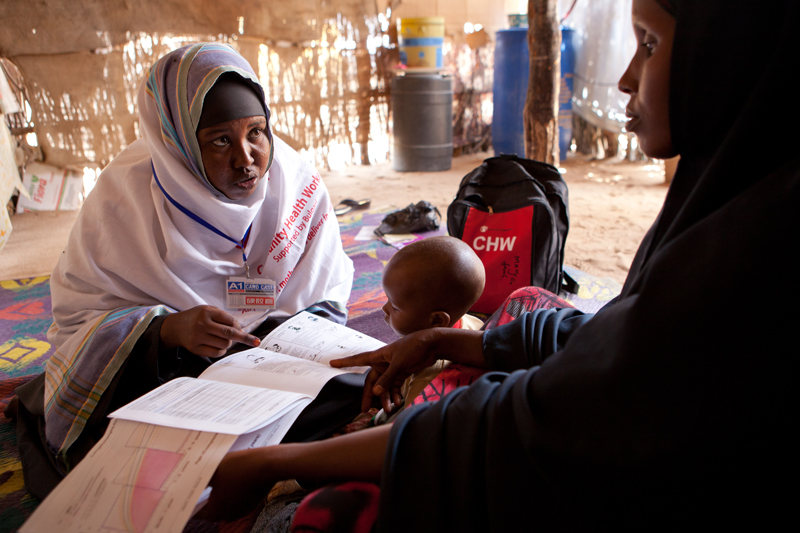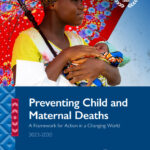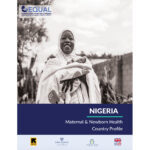In order to meet our maternal and newborn health objectives, we need health professionals and community health workers that:
- Are readily available where and when needed
- Have the necessary knowledge and skills for the services they are providing
- Are appropriately motivated to provide the needed service
- Are adequately supported and enabled with supervision, support systems (supply chain and information systems), necessary infrastructure (space, water, electricity, and communications), and more
Ensuring that this set of conditions is met depends on adequate human resources policy and management.
82
percentage of global births that were assisted by suitably qualified health workers between 2016 and 2021
66
percentage of women in least developed countries that were assisted by suitably qualified health workers during birth between 2016 and 2021
All data on this page represents the most recent data available, unless otherwise noted. Please visit our Newborn Numbers page and download the Excel spreadsheet to explore the data further.
More information
Over the past decade and a half, considerable emphasis within global maternal-newborn health programs has been placed on “skilled birth attendance,” i.e., births assisted by suitably qualified health workers. This reflects the observation that for women delivering at home without ready access to emergency obstetrical care, support from traditional birth attendants proved inadequate to substantially reduce risk of death for the mother or newborn. Considerable effort has been expended in many settings to help ensure that women give birth with the assistance of qualified human resources, specifically a health worker, and generally in a health facility.
However, in many instances there has not been equal attention given to the actual substance of the care provided or the necessary supports to enable health workers to provide adequate care. In recent years, there has been increasing attention in program work to the quality and content of maternal-newborn services, particularly around the time of birth. This is reflected in current work at the World Health Organization on improving quality of maternal-newborn health care.
Part of what is implied in the “skilled birth attendance” strategy is that assisting in childbirth does not necessarily require a physician. Many interventions related to maternal-newborn health can be competently delivered by categories of health workers with comparatively modest training.
Accordingly, certain maternal-newborn services can be provided by categories of health workers labelled as “community health workers” (CHWs). This is a broad designation that includes:
- Health auxiliaries with training sometimes approaching that of registered nurses
- Paid full-time workers with several months of basic training
- Non-salaried but financially “incentivized” workers, typically working less than full-time
- Volunteers providing services on a periodic or intermittent basis with little or no financial incentives

In some settings, there is more than one tier of CHWs. When robustly supported (as they can be under project conditions), non-salaried and volunteer CHWs have been demonstrated as effective for various maternal- and newborn-related services. There are fewer examples of such work being effectively delivered at national scale, under non-project conditions. A very important but frequently neglected factor is the supports needed for effective programs.
The issue is not so much,
- can CHWs be effective for a particular service?
But rather,
- what supports are necessary for effectiveness?
And,
- are such supports feasible at scale under normal, non-project conditions?
Program efforts commonly address health worker knowledge and skills. This is typically done primarily by training. Motivation is less often given focused attention. Certainly, some aspects of performance can be positively affected by financial incentives, although such incentives can also have unintended negative consequences. However, motivation is more than just a matter of incentives.
In many settings, legitimate and illegitimate absences from work significantly undermine reliable access to services. This can be a consequence, for example, of frequent off-site trainings. There are also many settings where health workers are either frequently away from their posts without authorization or where they offer services only for very limited periods of time each day.
Even when health workers are at their posts, their practices are affected not only by material they may have been exposed to in training but also by other influences on what they consider appropriate care. For example, health workers may be well aware of what treatments are recommended or authorized in national treatment guidelines but may — for any number of reasons — prefer to offer treatments not reflected in official protocols. For human resources program efforts to be effective in ensuring availability of appropriate care, they need to respond to the actual factors influencing health worker practices.
Supervision is often mentioned as an important performance factor in health worker practices. Certainly under project conditions, there are numerous examples of “supportive technical supervision” or “mentoring” that appear to have made a positive contribution to quality of care. There are, however, far fewer examples of this function being effectively delivered under non-project conditions. Health-facility-level quality improvement efforts can serve a somewhat similar function, whereby groups of health staff work collectively to improve performance, holding each other accountable.








